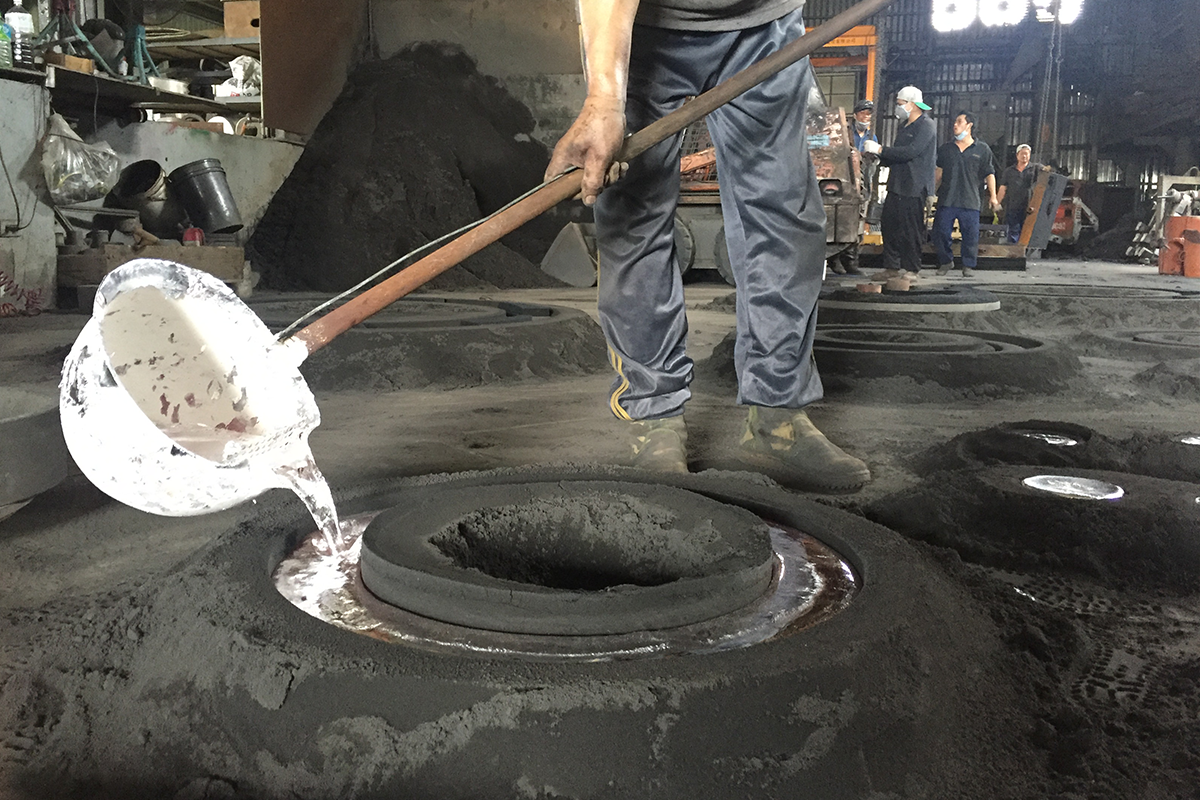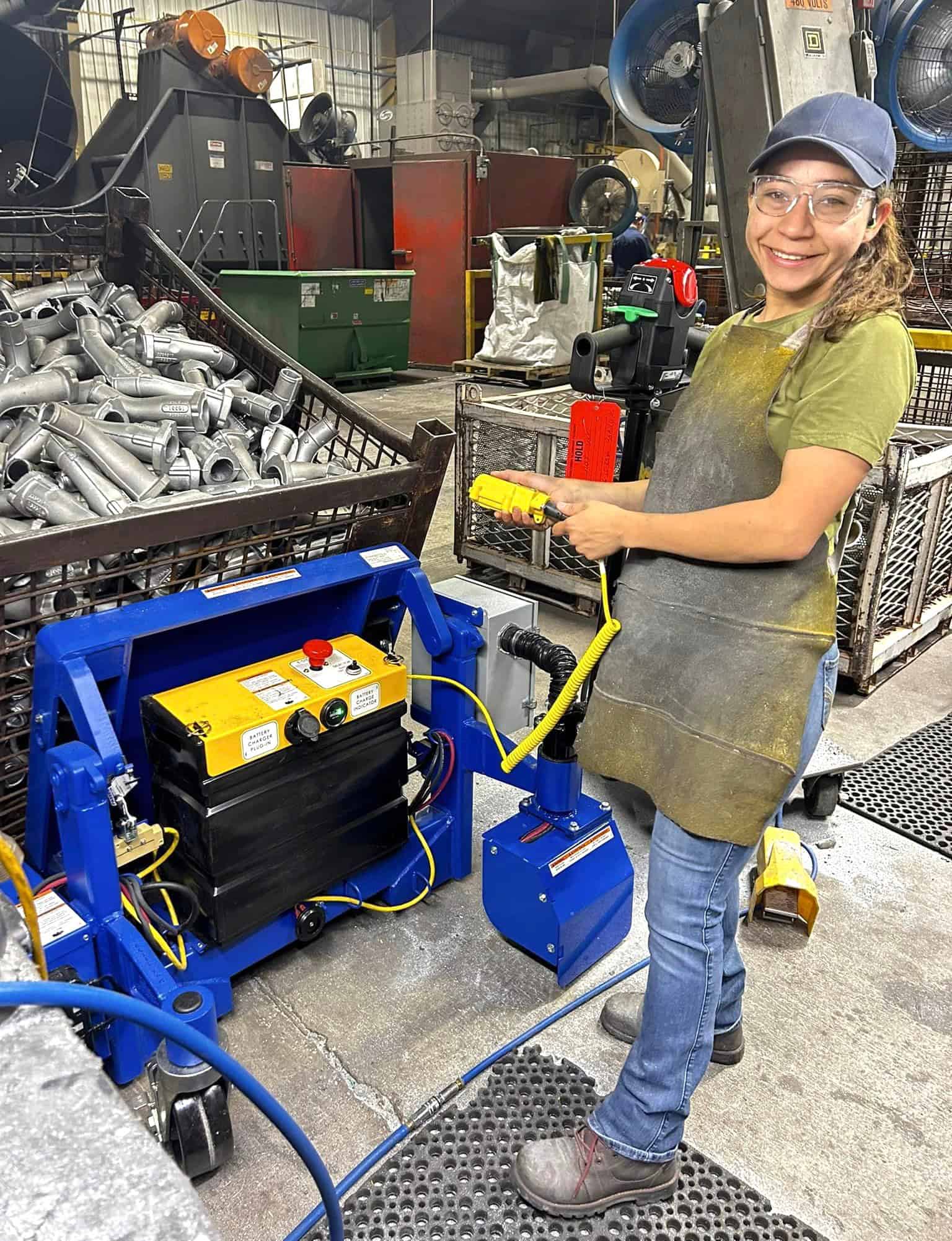How Aluminum Foundry Wisconsin boosts casting processes
How Aluminum Foundry Adds To Developments in Aerospace Engineering
Aluminum shops are integral to developments in aerospace engineering. They generate light-weight, high-strength elements that are vital for modern-day aircraft. Via innovative spreading techniques, these factories produce intricate geometries that enhance structural integrity. In addition, the growth of remarkable Aluminum alloys sustains the market's concentrate on gas efficiency and sustainability. Obstacles continue to be in the production procedure. Comprehending these aspects exposes the extensive influence of Aluminum on aeronautics's future.
The Relevance of Lightweight Materials in Aerospace Design
As the aerospace sector remains to evolve, the significance of lightweight products becomes progressively apparent. The need for effectiveness and sustainability drives designers to prioritize the usage of products that minimize overall weight without endangering architectural stability. Light-weight products, particularly Aluminum, play a crucial function in boosting fuel performance, boosting haul capacity, and boosting the general performance of airplane.
The integration of these materials enables for cutting-edge styles, enabling manufacturers to produce even more wind resistant forms that can stand up to severe problems. The decrease in weight not only reduces functional costs however additionally contributes to a lowered environmental footprint, lining up with international efforts toward sustainability in aeronautics.
Advanced Spreading Techniques in Aluminum Foundries
Advanced spreading techniques in Aluminum foundries play a crucial duty in aerospace engineering by enabling the manufacturing of lightweight and accurate components. Technologies in mold layout and accuracy spreading processes are crucial in accomplishing perfect efficiency and structural stability. In addition, the growth of lightweight alloys enhances the total efficiency and effectiveness of aerospace applications.
Cutting-edge Mold And Mildew Layout
Innovative mold style plays an essential function in the performance and efficiency of Aluminum foundries, especially within the aerospace field. By leveraging innovative products and methods, modern molds can be engineered to stand up to heats and pressures, making sure peak efficiency throughout the spreading procedure. These designs commonly include complicated geometries that permit the production of light-weight yet structurally audio elements, necessary for aerospace applications. Additionally, the usage of computer-aided style (CAD) software application facilitates precise modeling, allowing foundries to fine-tune and simulate mold designs before physical manufacturing begins. This not just boosts the high quality of cast components yet likewise decreases waste and preparation, leading to significant price savings. In general, cutting-edge mold and mildew layout is a foundation of progress in Aluminum Foundry technology for aerospace design.
Accuracy Casting Processes
The efficiency of innovative mold and mildew layouts effortlessly integrates with accuracy casting procedures, which are essential for producing high-quality Aluminum components in aerospace design. These processes, including sand spreading, pass away spreading, and investment spreading, guarantee the development of complicated geometries with limited resistances. Advanced methods like vacuum spreading and stress pass away casting enhance the integrity and surface coating of the last products. Accuracy casting minimizes product waste while taking full advantage of the mechanical properties of Aluminum, essential for aerospace applications. Furthermore, utilizing real-time tracking and progressed simulation devices throughout the spreading process permits instant adjustments, bring about improved quality assurance. Collectively, these accuracy casting procedures setting Aluminum foundries at the leading edge of aerospace technology, sustaining the sector's need for integrity and efficiency.
Lightweight Alloy Development
As aerospace designers look for to enhance gas performance and performance, lightweight alloy growth ends up being a necessary emphasis in Aluminum factories. These factories utilize innovative spreading methods to create alloys that provide superior strength-to-weight proportions. Technologies in alloy make-up, including the unification of aspects like lithium and magnesium, allow the manufacturing of materials that stand up to severe problems while reducing general airplane weight. Methods such as die spreading and investment casting promote the precision manufacturing of intricate shapes, which are essential for aerospace applications. Additionally, recurring study aims to maximize these alloys for improved mechanical residential or commercial properties and enhanced longevity. By focusing on light-weight alloy advancement, Aluminum shops substantially add to the development of aerospace design, leading the way for more lasting and efficient aircraft designs.

Enhancing Architectural Integrity Through Aluminum Components
Aluminum components offer significant benefits in boosting structural integrity within aerospace design. Their light-weight nature adds to total efficiency while keeping toughness, which is important for airplane efficiency. Additionally, the tension resistance properties of Aluminum assistance assure the durability and dependability of aerospace structures under various operational conditions.
Lightweight Product Conveniences
While conventional materials commonly compromise weight for stamina, making use of Aluminum components in aerospace design supplies substantial benefits in structural honesty. Aluminum's light-weight nature adds to overall style performance, permitting more streamlined airplane that eat much less gas, thus improving sustainability. The product's superb strength-to-weight ratio guarantees that parts preserve toughness without adding unneeded mass. This high quality fosters boosted efficiency and dexterity in flight, as well as enhanced payload abilities. Furthermore, Aluminum's resistance to corrosion extends the lifespan of aerospace frameworks, decreasing upkeep expenses and boosting security. As manufacturers increasingly take on Aluminum alloys, the aerospace market experiences a transformative shift in the direction of a lot more efficient and efficient design remedies that focus on both efficiency and ecological obligation.
Stress Resistance Characteristics
Although numerous materials possess one-of-a-kind properties, Aluminum's phenomenal tension resistance stands apart as a crucial factor in enhancing the architectural honesty of aerospace components. This resistance plays a vital function in making certain that aircraft can endure different functional anxieties, consisting of tiredness, influence, and ecological problems. Aluminum alloys, specifically engineered for aerospace applications, display high tensile stamina while preserving light-weight attributes, enabling engineers to develop a lot more effective frameworks - Aluminum Foundry. Furthermore, the capacity of Aluminum to endure cyclic loading without considerable deformation adds to the durability and reliability of aerospace components. As developments continue in Aluminum Foundry strategies, the advancement of stress-resistant Aluminum elements assures further improvements in efficiency, safety, and performance across the aerospace industry, strengthening Aluminum's role as a preferred product in contemporary engineering
Fuel Performance Improvements Driven by Aluminum Innovations
As the aerospace sector seeks to boost fuel performance, ingenious uses Aluminum have emerged as a necessary option. Aluminum's lightweight nature especially reduces airplane weight, enabling for lower gas intake during flight. This decrease in weight is crucial, as even little reductions can result in substantial enhancements in overall gas economy.
Advanced Aluminum alloys, made for improved stamina and longevity, make it possible for makers to develop components that maintain structural honesty while reducing mass - Aluminum Foundry. In addition, the integration of Aluminum in airframes and engine elements helps with boosted aerodynamics, adding to reduced drag and enhanced efficiency
The fostering of Aluminum in aerospace not just fulfills the need for fuel-efficient layout yet also lines up with regulative pressures for reduced emissions. As these innovations remain to develop, they play a significant role in establishing new benchmarks for fuel performance, making sure that the aerospace field can fulfill growing environmental and financial difficulties.

The Function of Aluminum in Sustainable Aeronautics Practices
The raising emphasis on sustainable aeronautics methods has positioned Aluminum as a vital material in the pursuit for greener airplane layout. Known for its lightweight residential or commercial properties, Aluminum significantly minimizes aircraft weight, resulting in lower fuel usage and discharges. Its recyclability further improves its sustainability profile, as Aluminum can be reused forever without loss of top quality. This characteristic sustains a circular economic situation within the aeronautics industry, minimizing waste and source exhaustion.
Improvements in Aluminum alloys have actually enhanced you could check here their strength and corrosion resistance, allowing for longer solution life and minimized maintenance demands. These developments assist in the development of a lot more effective aircraft structures, adding to overall sustainability efforts. In addition, Aluminum's thermal conductivity plays an important role in energy-efficient layouts, improving systems such as warm exchangers. Collectively, these attributes emphasize Aluminum's critical role ahead of time sustainable aviation, straightening with global efforts focused on decreasing the ecological influence of air traveling.
Challenges Dealt With by Aluminum Foundries in Aerospace Manufacturing
While Aluminum factories play a vital duty in aerospace manufacturing, they encounter significant difficulties that can impact production efficiency and top quality. One major obstacle is the rigid quality control criteria required in the aerospace industry. Any kind of problem can compromise safety and efficiency, demanding strenuous inspection procedures that expand manufacturing timelines. Additionally, shops frequently emulate rising and pop over to this web-site fall raw product costs, which can affect prices and success. The complexity of Aluminum alloys utilized in aerospace applications more complicates the manufacturing process, as exact solutions are important for attaining wanted mechanical properties. Additionally, knowledgeable labor scarcities prevent the ability to preserve high-grade production levels. Ecological regulations enforce limitations on emissions and waste monitoring, needing factories to spend in lasting practices, which can be cost-prohibitive. These elements collectively produce a landscape where Aluminum shops need to constantly adapt to fulfill the progressing demands of aerospace production while making certain security and compliance.
Future Fads in Aluminum Applications for Aerospace Engineering
With improvements in innovation and increasing needs for effectiveness, the future of Aluminum applications in aerospace engineering is positioned for significant improvement. The combination of cutting-edge Aluminum alloys and compounds is expected to boost strength-to-weight ratios, leading to even more fuel-efficient aircraft styles. On top of that, improvements in browse around this web-site additive manufacturing techniques will permit for the production of complex Aluminum structures that were formerly difficult, enhancing performance and decreasing waste.

Sustainable techniques will certainly play a vital role, with a growing emphasis on recycling Aluminum to decrease ecological impact. The aerospace market is most likely to welcome smarter manufacturing processes, such as automation and man-made knowledge, guaranteeing higher high quality and precision in Aluminum elements. Partnerships between Aluminum factories and aerospace business will foster research and development, leading the method for new applications that satisfy the strict requirements of contemporary aerospace engineering. Overall, the future looks promising for Aluminum's role in shaping the skies
Frequently Asked Questions
What Are the Environmental Effects of Aluminum Manufacturing in Aerospace?
The ecological impacts of Aluminum production in aerospace include considerable energy usage, greenhouse gas emissions, and environment disruption. Additionally, mining processes can cause dirt destruction and water contamination, elevating problems regarding sustainability and environmental equilibrium.
How Does Aluminum Contrast to Various Other Materials in Aerospace Applications?
Aluminum offers an unique mix of lightweight residential or commercial properties, corrosion resistance, and cost-effectiveness contrasted to other materials. Its high strength-to-weight proportion makes it specifically useful for aerospace applications, improving fuel effectiveness and overall performance in aircraft style.
What Qualifications Do Aluminum Foundry Employees Requirement for Aerospace Projects?
Aluminum Foundry workers call for specific training in metallurgy and casting strategies, together with knowledge of aerospace sector requirements. Certifications in top quality control and security protocols are additionally vital to ensure compliance with rigorous aerospace project needs.
Are There Any Kind Of Security Worries With Using Aluminum in Aerospace Engineering?
Safety worries relating to Aluminum in aerospace engineering consist of vulnerability to fatigue, tension, and rust fractures. Correct treatment and alloy selection are vital to minimize these risks, guaranteeing structural honesty and general safety in aerospace applications.
Exactly How Does Aluminum Recycling Benefit the Aerospace Market?
Aluminum reusing greatly benefits the aerospace market by minimizing product prices, lessening ecological influence, and preserving power. This lasting technique enhances the market's performance while advertising making use of light-weight, high-performance parts in airplane production.
Advanced spreading methods in Aluminum factories play a vital function in aerospace engineering by enabling the manufacturing of light-weight and specific parts. Ingenious mold style plays a vital function in the efficiency and performance of Aluminum foundries, specifically within the aerospace field. As aerospace designers seek to enhance fuel performance and efficiency, lightweight alloy advancement becomes a necessary emphasis in Aluminum foundries. Aluminum alloys, specifically engineered for aerospace applications, show high tensile strength while maintaining light-weight characteristics, making it possible for engineers to create extra efficient frameworks. Partnerships between Aluminum factories and aerospace companies will certainly promote study and development, leading the means for new applications that meet the rigid requirements of contemporary aerospace engineering.